A MODERN TOWN
From the events of the Royal Free Town of Podgórze 1784–1915
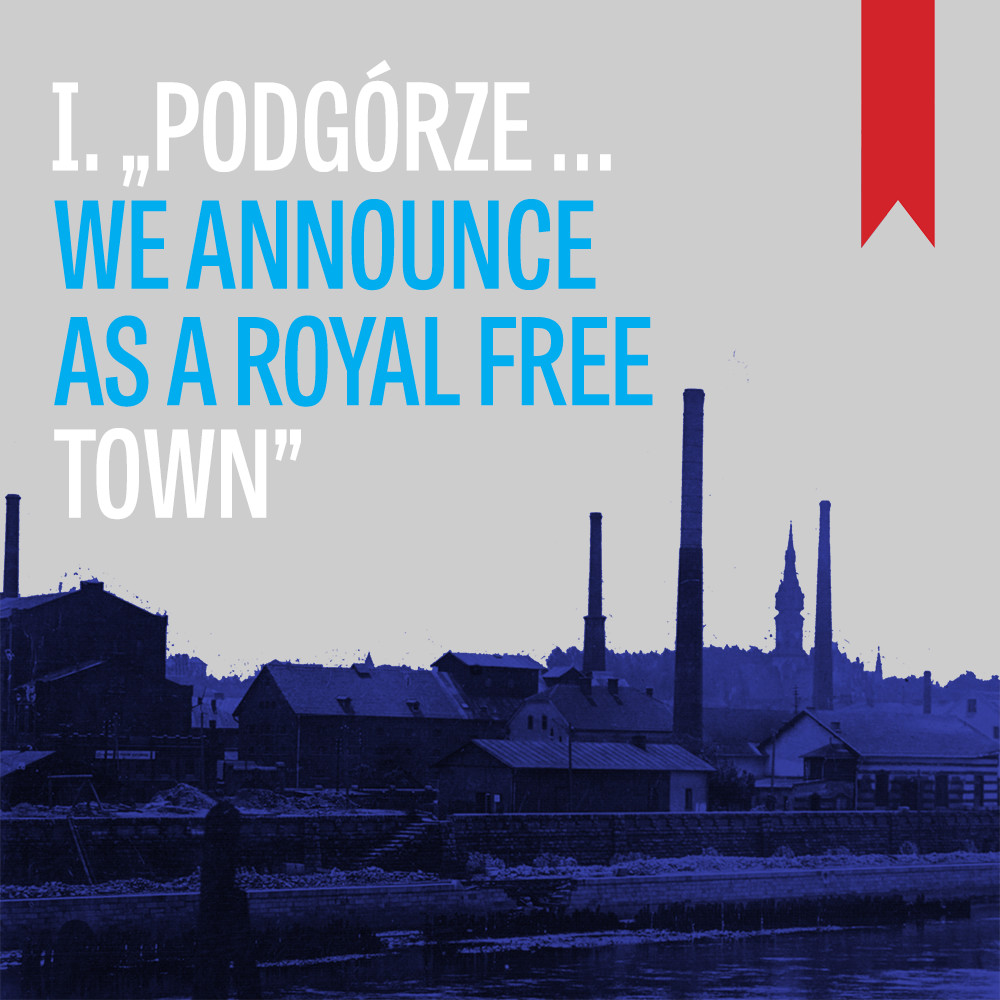
Emperor Joseph II, with a universal issued in Vienna on 26 February 1784, granted the status of royal free town to a small settlement developing on the south bank of the Vistula. The potential of the new urban centre was seen in its natural wealth and beneficial location near the border...
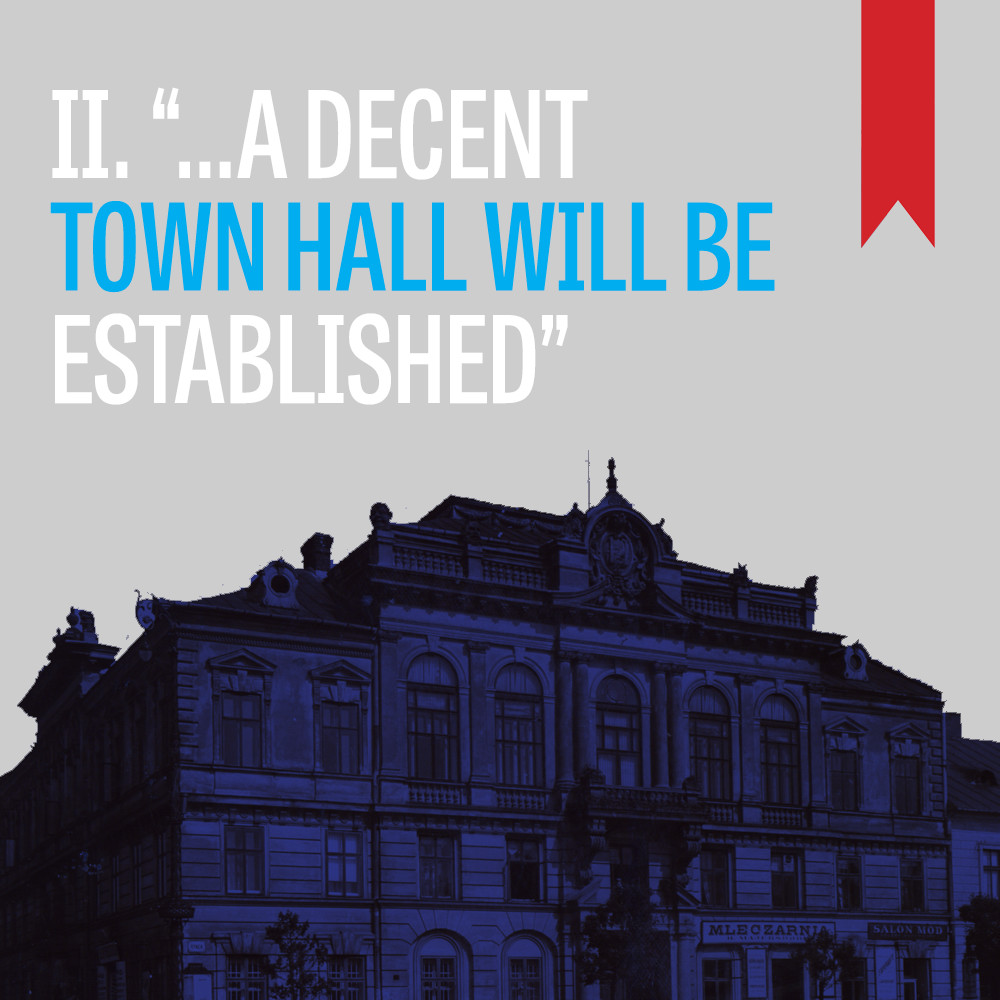
The Royal Free Town of Podgórze in 1784 obtained its own local government and, just like the Royal Capital of Lwów, the rights to send representatives to state proceedings. The leaders were to be chosen by citizens of Podgórze, in accordance with the order established from above...
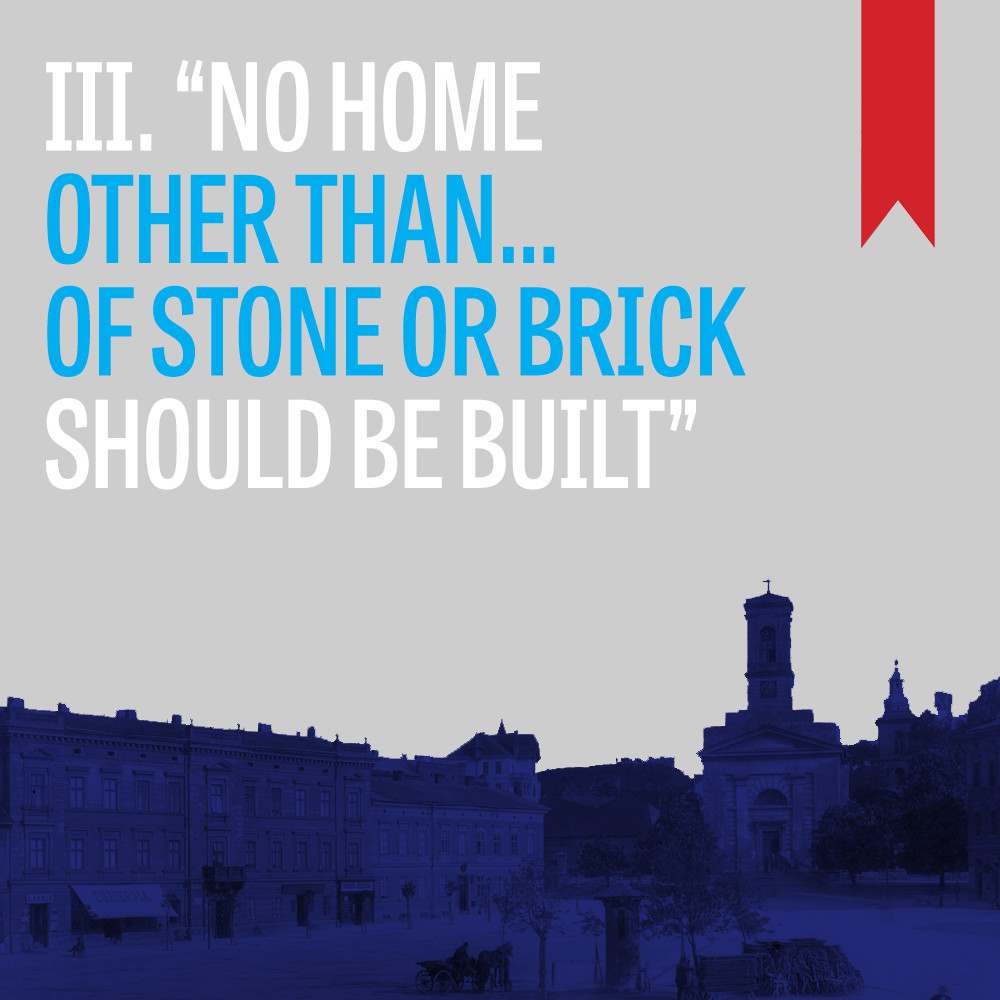
An imperial universal in 1784 tried to bring necessary order to the settlement chaotically growing on the south bank of the Vistula. With the development of the town and the safety of its residents in mind, a range of building regulations were introduced. The town engineer supervised the division ...

Imperial orders guaranteed the inhabitants of Podgórze the freedom of religious practice. Catholics, Evangelists and followers of the religion of Moses lived beside one another, with equal rights to participate in public life. Podgórze, unlike other towns in Galicia, did not have a separate ...
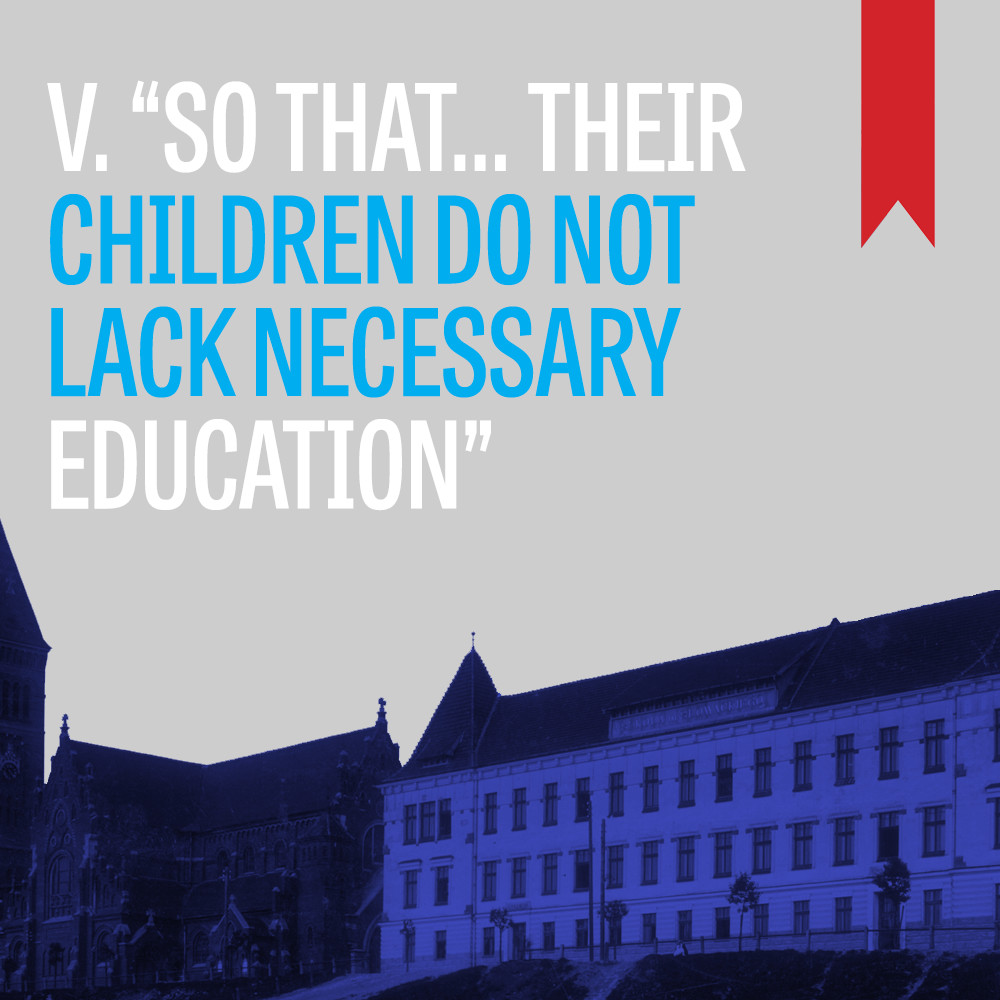
Emperor Joseph II, while granting Podgórze the status of town, set the condition of building a school. In 1788, a 3-class co-educational elementary school opened, with rooms in private homes being adapted for educational purposes, including the halls of the former inn at 13 Limanowskiego ...
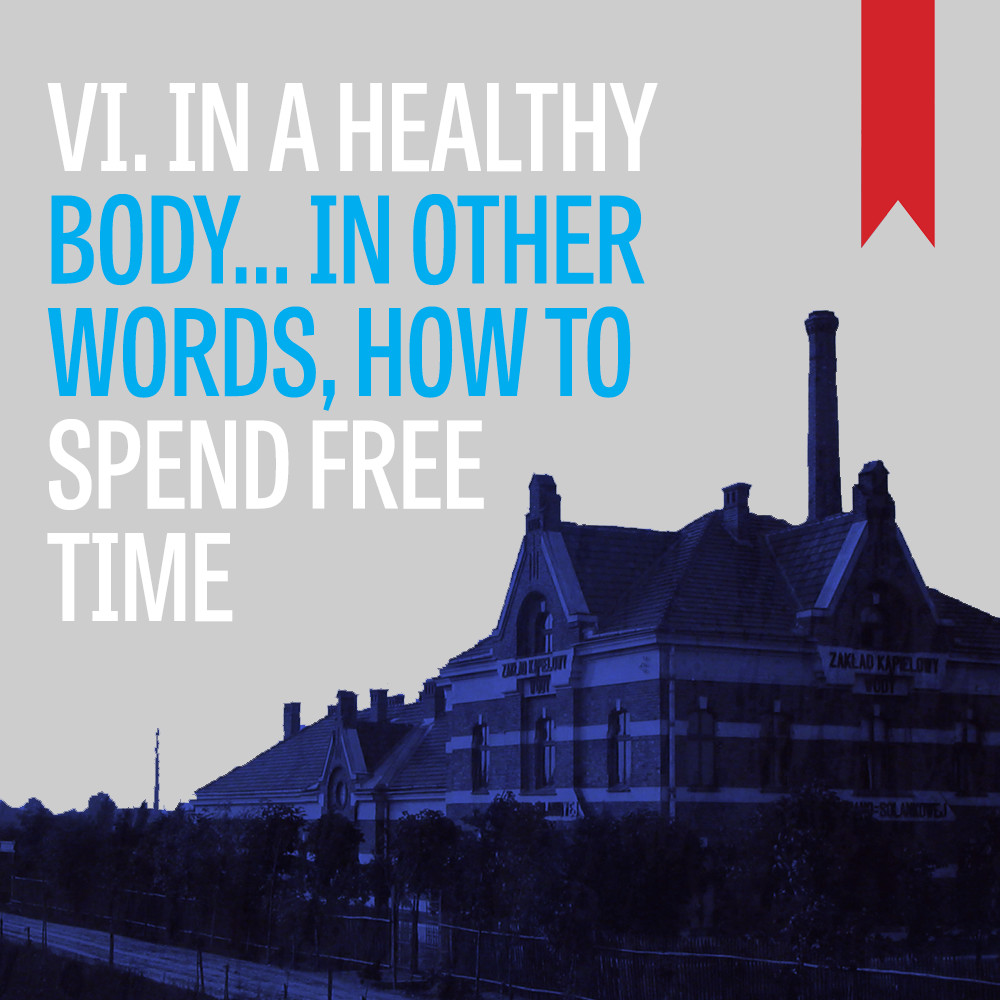
After hard work and intensive studying, the inhabitants of Podgórze wanted to rest. They were able to use the beneficial nature and wealth of Krzemionki. They strolled along the walkways created around the former royal pond by the mayor Florian Nowacki, the boulevards ...
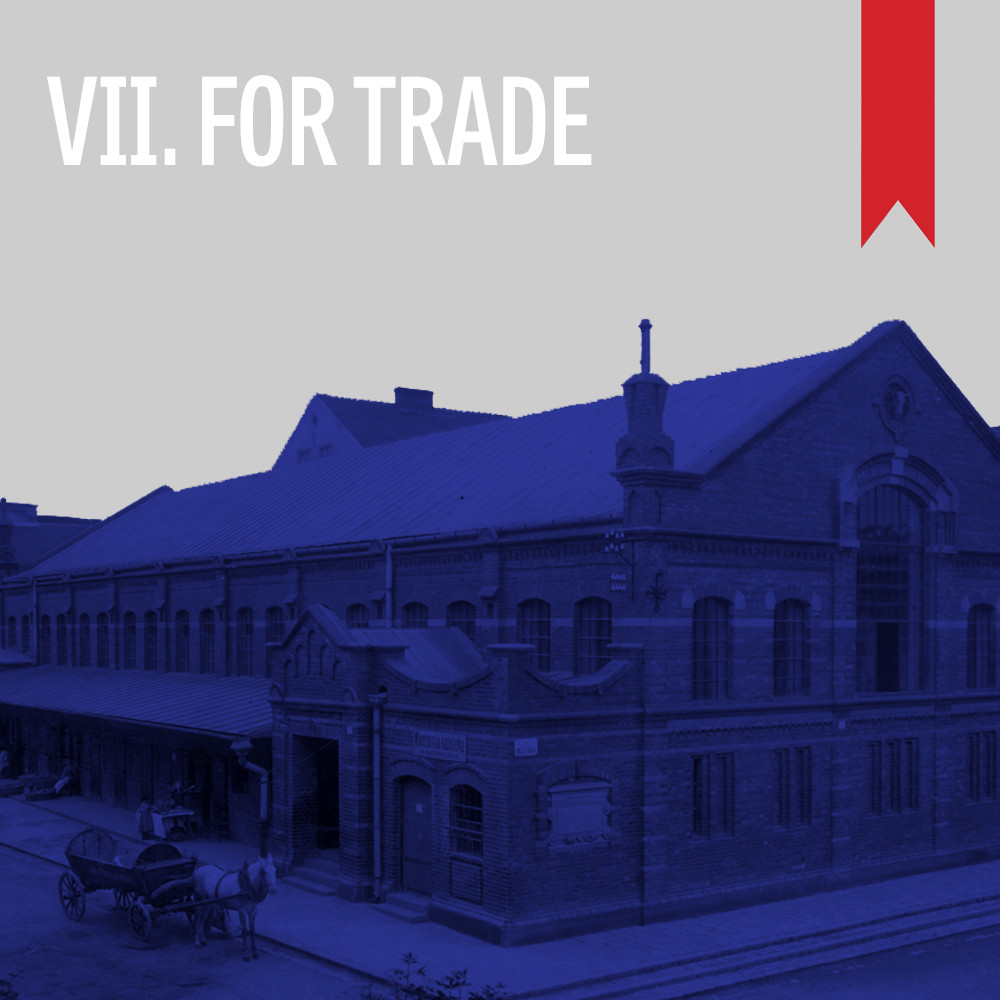
The particularly beneficial location at the crossroads of trade routes leading to Hungary and Silesia stimulated the development of a settlement on the south bank of the Vistula. By the Wielicka Bridge, mills and other buildings were constructed, in which salt and other goods for...
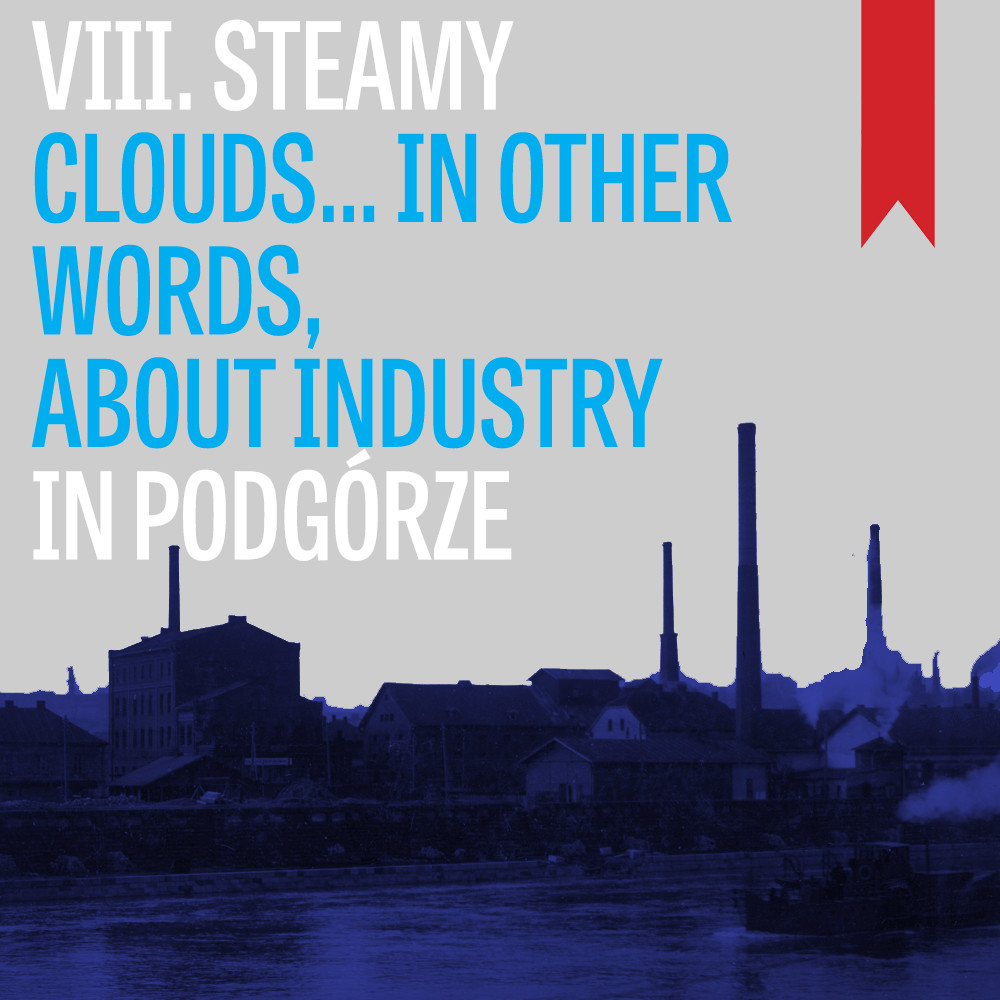
The limestone hill of Krzemionki in Podgórze represented a great source of minerals. First of all, flint was obtained which served in the production of tools, later limestone used in building and the chemical industry was valued, then marl for the production of cement, clay...
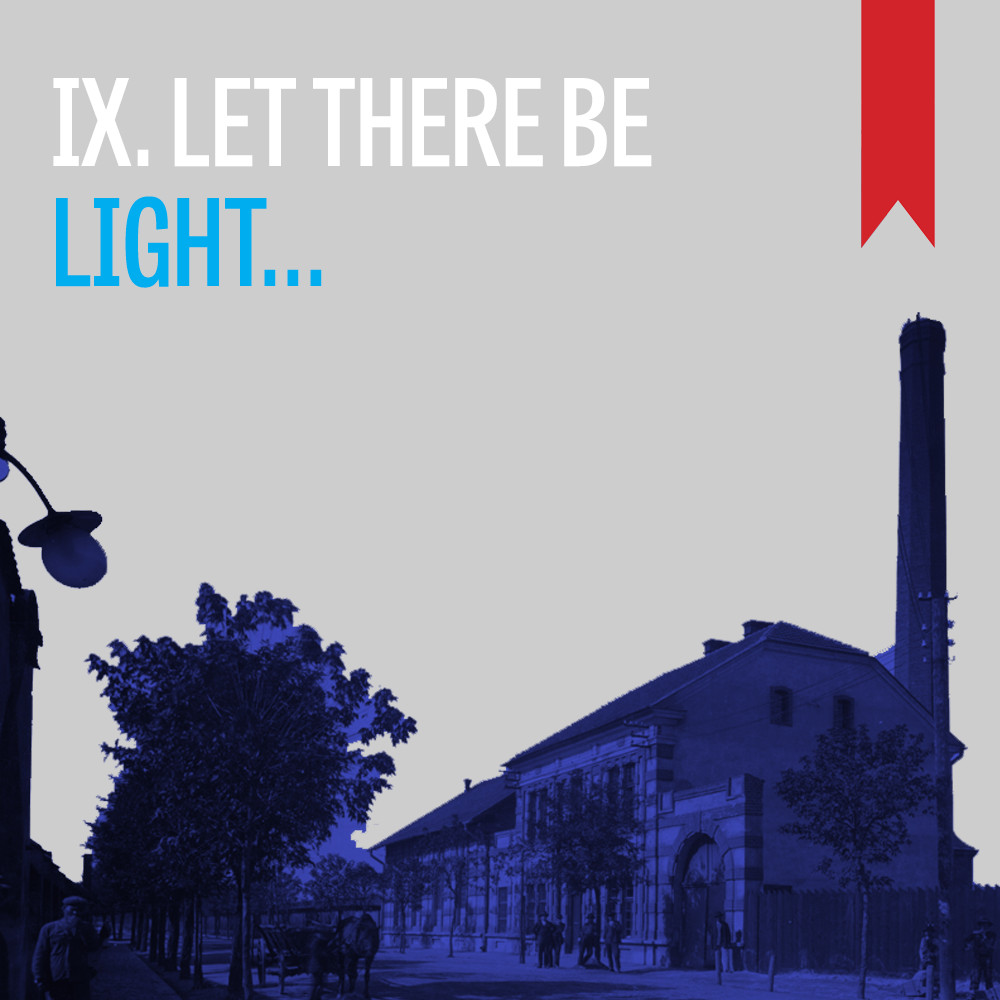
In the 19th century, the streets in Podgórze were lit with oil and gas lamps. However, the real glow in the town appeared in 1900 together with the opening of the municipal electricity generating plant on Nadwiślańska Street. The buildings of the plant contained a set of generators...
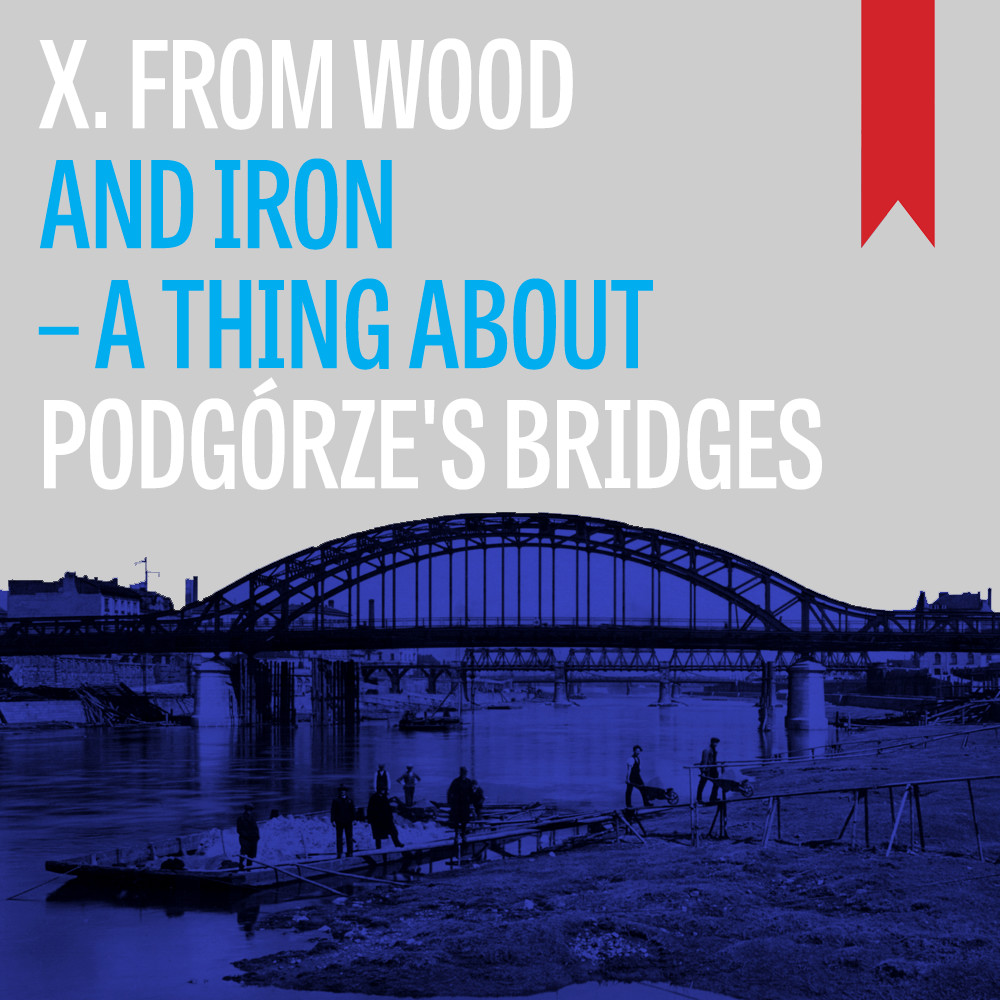
For the area of Krzemionki, a key role was played by efficient communication with the north bank of the river. The solid wooden Wielicki Bridge served merchants and local residents until it burnt down in 1655. The next, less durable, constructions were not able to satisfy the increasing...
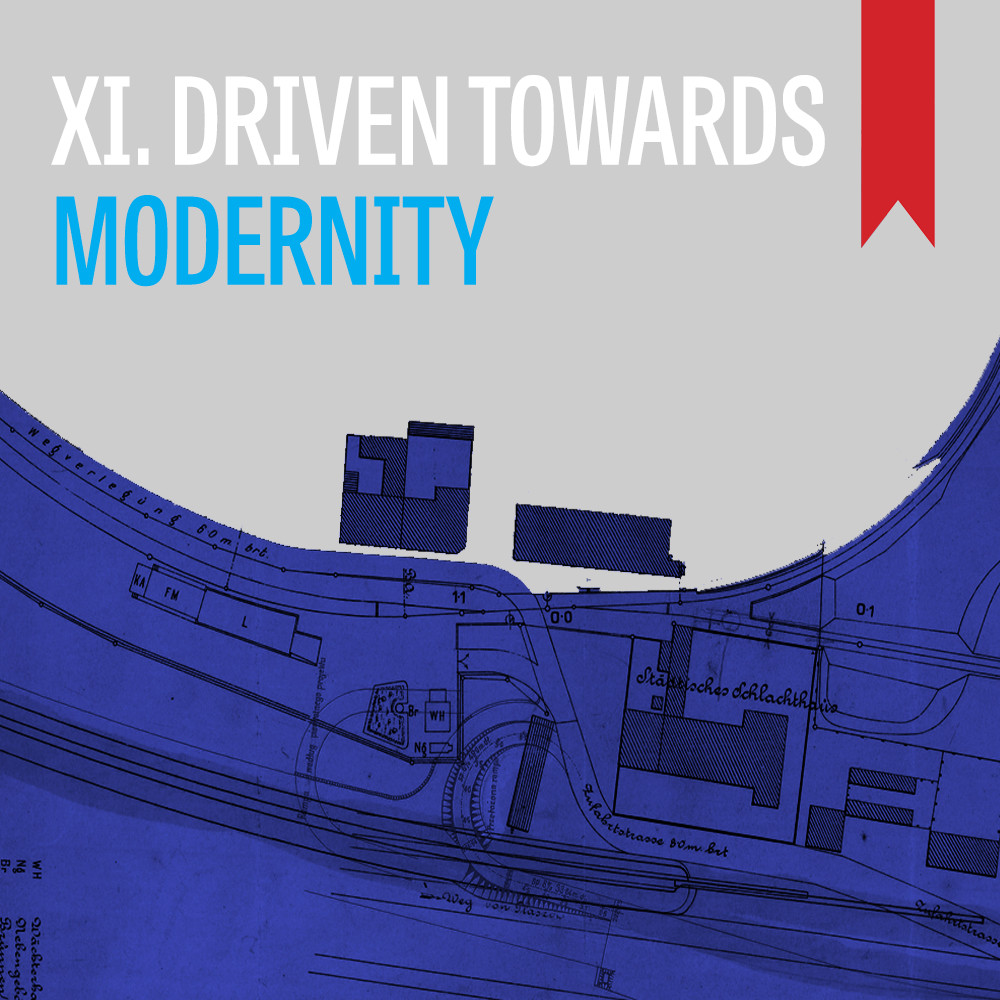
Together with the construction in the years 1850–1856 of the Eastern Railway connecting Kraków with Lwów, the rulers of Podgórze began their attempts to open a railway station. Many years of attempts did not bring the desired results. Attempts were started again in 1872 with the planned...

Kraków, surrounded by a ring of Austrian forts, over-populated and restricted by archaic rules, looked at the beginning of the 20th century for a way out of the impasse. In order to introduce reforms and begin new investments, space was necessary, however, it was lacking in Kraków. The rulers...
